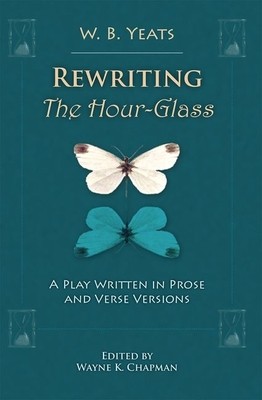
- We will send in 10–14 business days.
- Author: W B YEATS
- Publisher: Clemson University Press
- ISBN-10: 1942954166
- ISBN-13: 9781942954163
- Format: 15.5 x 22.4 x 1.3 cm, kieti viršeliai
- Language: English
- SAVE -10% with code: EXTRA
Reviews
Description
Rewriting "The Hour-Glass" presents the complete prose text of Yeats's one-act morality play of 1903, the complete "mixed" poetry and prose text of 1913, and all variants between and after these as both states were maintained in his lifetime. As a breakthrough play for Yeats, The Hour-Glass was commended in his manifesto "The Reform of the Theatre" (1903) and became, with significant rewriting, his first play to employ masks, by analogy to the Renaissance-era court masque, prior to his own adaptation of Japanese form and Irish content in his "plays for dancers." Like any critical edition, this book engages with and acknowledges all of the relevant texts, including Yeats's own corrected copies of the play. Consequently, the book unpacks and unwinds convolutions of the notoriously dual presentations of prose and verse versions in the Variorum Edition, reversing the procedure of the latter and permitting a more linear presentation of first and last states of the play, much to the
benefit of students.
EXTRA 10 % discount with code: EXTRA
The promotion ends in 23d.13:29:20
The discount code is valid when purchasing from 10 €. Discounts do not stack.
- Author: W B YEATS
- Publisher: Clemson University Press
- ISBN-10: 1942954166
- ISBN-13: 9781942954163
- Format: 15.5 x 22.4 x 1.3 cm, kieti viršeliai
- Language: English English
Rewriting "The Hour-Glass" presents the complete prose text of Yeats's one-act morality play of 1903, the complete "mixed" poetry and prose text of 1913, and all variants between and after these as both states were maintained in his lifetime. As a breakthrough play for Yeats, The Hour-Glass was commended in his manifesto "The Reform of the Theatre" (1903) and became, with significant rewriting, his first play to employ masks, by analogy to the Renaissance-era court masque, prior to his own adaptation of Japanese form and Irish content in his "plays for dancers." Like any critical edition, this book engages with and acknowledges all of the relevant texts, including Yeats's own corrected copies of the play. Consequently, the book unpacks and unwinds convolutions of the notoriously dual presentations of prose and verse versions in the Variorum Edition, reversing the procedure of the latter and permitting a more linear presentation of first and last states of the play, much to the
benefit of students.


Reviews